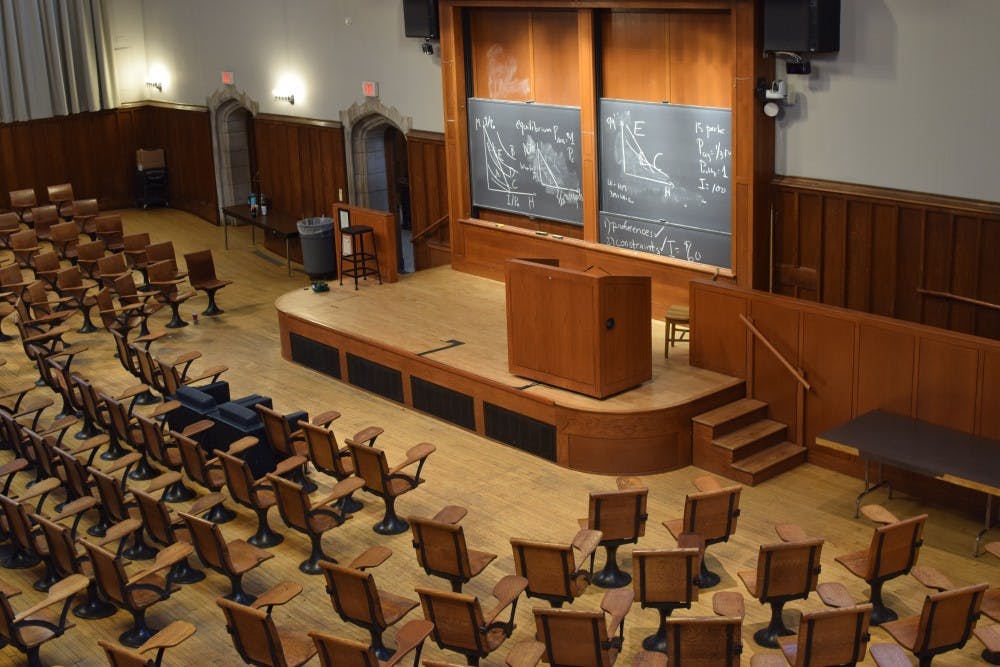For the past year, I have wanted to write about technology in education. When I first arrived at the University, I was surprised that at an institution whose endowment lies multiple orders of magnitude beyond any amount of money I could imagine, I found classrooms containing no technology more recent than electric lights or plastic chairs.
Yet I never found a strong enough urge to write such a column until the coronavirus pandemic began. While long before I entered college, I held the view that incorporating technology in education — while not always a negative — is generally unnecessary, it was not until the pandemic subjected me to half a semester of online classes that I solidified this opinion.
The coronavirus pandemic has certainly changed the pedagogical necessity of utilizing technology. In fact, we are deeply indebted to technology for even allowing us to hold classes, despite the fact that students are on multiple continents. That being said, the video calls, online textbooks, and pre-recorded lectures currently functioning as alternatives to traditional classrooms make learning less personalized to the students, which in turn makes learning more difficult.
In the spirit of my column on the love of learning, I suggest that we take away an experiential lesson from this pandemic: the persisting utility of ancient teaching methods still in use in the present day. Now, we can all experience firsthand how technology renders education harder and extrapolate about how to best learn and teach in the future.
Indeed, by identifying the problems with these educational methods, I finally understood why Princeton still hasn’t given up on time-tested chalk.
A so-called “chalk talk” provides two subtle advantages over the more technologically sophisticated slideshow with a projector. The first is that a chalk lecture is easier to modify depending on student questions; changing the order of material presented, for example, is much simpler with chalk than with pre-existing slides.
Furthermore, with a chalkboard-based lecture, the lecturer can very easily refer back to earlier material and present new material simultaneously by writing on different parts of the board. Such an option can allow students to more easily connect ideas and make analogies, an important component of the learning process. This is sometimes possible in a more technologically advanced format, but logistically simpler with chalk.
The second advantage of physical lectures is that writing on a blackboard slows down a lecturer to a pace where students can easily keep up, while using a slideshow provides no such constraint. Students can write notes in their notebooks while the professor writes content on the chalkboard. While lecturers can certainly pause slideshows routinely for students to catch up in their notes, the chalkboard as an educational tool makes this frequent pausing more natural and easier for teachers.

In short, physical lectures ensure that the material can never fly by too quickly for the students.
Even more difficult to learn from than slideshow lectures are pre-recorded lectures, which currently serve the necessary purpose of allowing students in different time zones to watch lectures at appropriate times. In live lectures, professors can assess the room through visual cues (laughs, signs of boredom or confusion, etc.), adjusting the content accordingly. Students can interrupt the lecturer with clarifying questions, something impossible with pre-recorded lectures.
While the coronavirus pandemic allows us to appreciate the immense power of technology in facilitating our education in these unforeseeable circumstances, the pandemic also allows us to see the faults in incorporating technology in education. Old-fashioned methods of teaching, while not the only way to teach, certainly alleviate many of these faults.
It is obvious that online learning is inferior to in-person learning; what our experience with online learning can teach us is why. Technology tends to make classes less adaptable and make the process of assessing students’ reactions to material harder for professors. This is obvious with Zoom classes, but is also true of recorded lectures and slideshows; this is the final answer to my original surprise about why a world-class university retains so many antiquated teaching methods.

The pandemic should not be a farewell to traditional education in favor of innovative alternatives, but rather a temporary turn to the high-tech; from the pandemic, we can garner even more appreciation for the traditional educational methods to which we will hopefully return soon.
Ollie Thakar is a first-year from Baltimore, M.D. He can be reached at othakar@princeton.edu.








